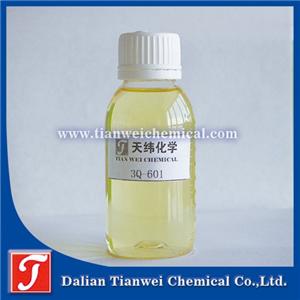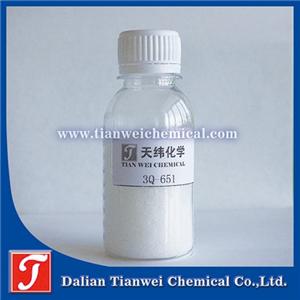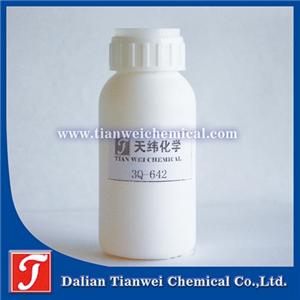News
Characteristics and advantages of dibromonitrilopropionamide (DBNPA)
Dibromonitrilopropionamide (alias dibromocyanoacetamide, DBNPA for short) is a new and efficient bactericidal algaecide and water treatment agent. The material has the advantages of high-efficiency broad spectrum, easy degradation, no residual residue, no pollution to the environment, and at the same time,
18-01-2021-
Ink anti-corrosion and anti-bacterial environmental protection solutions
Since ink is composed of pigments, solvents, additives, proteins and other components, these components are important factors affecting the shelf life of ink and ink, in the process of storage or use
09-05-2024 -
Industrial mildew prevention agent, the importance of mildew prevention!
Industrial anti-mildew agent is one of the industrial anti-mildew agent varieties with good anti-mildew quality, high activity and wide use and low cost in the similar anti-mildew agent products on the market at present. It has strong control and killing effect on bacteria, mold and algae.
10-01-2024 -
Main components and applications of organosilicon coating defoamer
Coating defoamer is made of organic polyether ester, mineral oil and alcohol by special process. It has the characteristics of self-emulsification, easy dispersion, strong versatility, good defoaming and long defoaming time.
08-10-2023 -
the transport of mildew prevention agents
Pay attention to the driving of vehicles carrying dangerous goods, should be set up GB13392-92 "Road Transport of Dangerous Goods Vehicle signs". The car must strictly abide by the traffic, fire, public security and other laws and regulations, should control the speed, keep the distance from the car in front, in case of circumstances, slow down in advance, avoid emergency braking, prohibited illegal overtaking, to ensure driving safety.
26-01-2023 -
Excellent reliable preservative manufacturers choose Dalian Tianwei Chemical
Nowdays, people are increasingly aware of the importance of preservative in products. It is not a bad thing to add preservatives properly in their articles. Adding preservatives within the specified range can effectively protect the product. Dalian Tianwei Chemicals is a professional manufacturer of preservative products. Its company has a wide range of products. Including paper mills,
13-08-2020
-
Characteristics and advantages of dibromonitrilopropionamide (DBNPA)
Dibromonitrilopropionamide (alias dibromocyanoacetamide, DBNPA for short) is a new and efficient bactericidal algaecide and water treatment agent. The material has the advantages of high-efficiency broad spectrum, easy degradation, no residual residue, no pollution to the environment, and at the same time,
18-01-2021 -
Preservatives and mold inhibitors for textile yarns and fabrics provide long-lasting mold prevention
Preservatives and fungicides commonly used in textile yarns and fabrics are a type of chemical auxiliaries that can inhibit or kill microorganisms (such as bacteria, fungi, and yeasts). Their core function is to prevent problems such as mold, rot, odor, and strength reduction caused by microbial growth during the storage, processing, or use of textiles. The following is the specific introduction:
25-12-2025 -
The addition of antibacterial materials to TPU gastric tubes does not affect the product performance
After adding antibacterial materials to TPU gastric tubes, they have demonstrated significant advantages in the medical field, mainly reflected in the improvement of antibacterial performance, reduction of infection risk, optimization of biocompatibility, enhancement of physical properties, flexible and diverse processing, and expansion of application scenarios. The following is a detailed introduction
24-12-2025 -
Introduction to Silver Ion Antibacterial and Deodorizing Agent for Cat Litter
Cat litter silver ion antibacterial and deodorizing agent is an innovative product designed to address the odor and bacterial growth issues of cat litter by utilizing silver ion antibacterial technology. Its core principle, functional advantages, and safety are as follows:
22-12-2025 -
The antibacterial agent for PVC hospital handrails has an antibacterial rate of 99.9%, reducing cross-infection
PVC hospital handrail antibacterial agent is an additive specially designed for PVC materials, aiming to inhibit or kill microorganisms on the surface of handrails to reduce the risk of cross-infection and ensure the hygiene and safety of the medical environment. The following is a detailed introduction from five aspects: core features, mechanism of action, application advantages, application scenarios, and key points of use
19-12-2025





